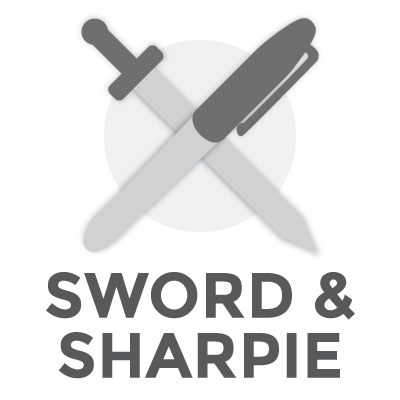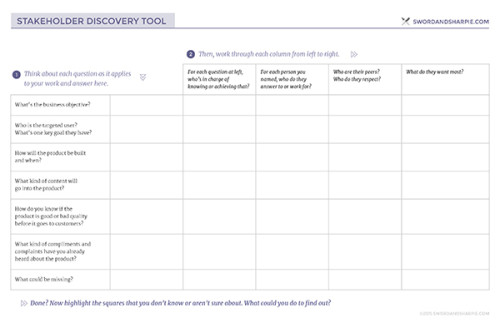Have you ever had a project or design thrown off at the last minute by someone you didn’t even think was involved with your project? Have you ever been in a situation with so many cooks in the kitchen, you weren’t even sure you could count them all? And how the heck were they all connected?
I know I’ve always found it discouraging when I’ve had to rework a design, usually at the last minute, because I forgot to get feedback from someone who ultimately had some feedback for me. I’ve learned gradually to try to take deliberate steps to think about who could potentially be involved out the outset of a project, as well as approaching major project milestones.
To help with this, I’ve created a free stakeholder analysis tool to help you identify a range of stakeholders on a UX project. I’d love to know if you can think of any ways to improve it, or if you found it helpful.
What is a stakeholder?
There’s a common misconception that a stakeholder is only the person who initiates a project, typically funding it. I say, this person is called the client, the owner, or the customer. It is more accurate (and useful) to think of a stakeholder as anyone who has a vested interest in a project—positive or negative. Wikipedia agrees with me, so indeed it must be true:
Project stakeholders are entities that have an interest in a given project. These stakeholders may be inside or outside an organization which:
- sponsor a project, or
- have an interest or a gain upon a successful completion of a project;
- may have a positive or negative influence in the project completion.
So basically, it’s everyone who gives a shit. And also the occasional person out to help the project fail. 😉
Why should you care?
When you can identify the people who may be interested in a project you’re working on, it allows you to do a couple of things:
- Discuss their needs and concerns, and work them in at the beginning. Incorporate their needs alongside user needs to find better solutions.
- Be proactive. Get feedback from them when you are ready, on your own terms, in an environment of your choosing. Help them understand if there are conflicting needs, so they never feel on the defensive. Make it collaborative instead.
- Anticipate objections and disagreements. Be prepared for them, work through them, or maybe even try to get support on your side ahead of time.
Basically, having done some up-front stakeholder analysis will allow you to better manage the project and save you time in the long run.
Check out the tool
Online, I’ve been able to find lots of resources for interviewing stakeholders or mapping their relationships, but I didn’t see much help in the way of identifying who was a stakeholder in the first place. And you need to know that first, right? How do you know if you’ve interviewed the right people? (Or if interviewing even makes sense!)
So I put together a quick PDF download of some questions that can help you identify people that might have an interest on your project’s journey from idea to reality. I tailored this specifically for user experience designers, working on software products. I hope it’s helpful!
More resources to take it even further
Once you’ve figured out who to talk to in this stakeholder analysis, check out these additional resources to take some great next steps.
The UX Research Plan that Stakeholders Love by Tomer Sharon at Smashing Magazine
A Stakeholder Interview Checklist by Kim Goodwin at Boxes and Arrows
Conducting an effective stakeholder interview by Philip Hodgson at User Focus
Partnering with Key Stakeholders in UX Strategy by Troy Parke at UX How
If you’re newer to UX, consider this Balsamiq discussion of process: UX Apprentice on Discovery
Stakeholder Mapping: IA Summit 2014 by Gene Smith—To me, this one was the most interesting of the bunch!



Trackbacks/Pingbacks